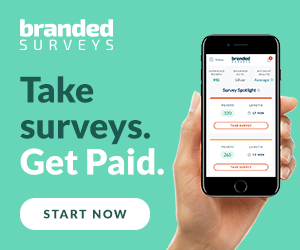Living paycheck to paycheck can be incredibly stressful and make it difficult to achieve financial goals. However, with the right strategies and mindset, it is possible to break free from this cycle and gain control over your finances. Here are six practical steps to help you improve your financial situation by breaking the paycheck-to-paycheck cycle.
1. Create a Realistic Budget
Budgeting is the golden key to breaking the paycheck-to-paycheck lifestyle. The first step toward gaining control of your money is assessing your current financial situation and creating a realistic budget. Here is a quick overview of how to do it:
Understand Your Income – Start by calculating your total income. Consider all sources of income, including your primary job, side gigs, investment returns, and any other sources of revenue. This will give you a clear picture of how much money you have coming in each month.
Determine Your Essential Expenses – Start by identifying your essential expenses. These expenses are the costs that must be covered to ensure your basic needs are met. They include housing, utilities, transportation, and food. Subtract these from your total income so that you can see how much money you have leftover.
Cut Back on Non-Essential Expenses – Review your non-essential expenses and look for areas where you can cut back. This may include reducing discretionary spending on entertainment, dining out, and luxury items. You can free up extra income by making small changes to your non-essential spending.
Set Savings Goals – Make saving a priority in your budget. Set specific savings goals and allocate a portion of your income towards them. Whether you are saving for an emergency fund, a down payment on a house, or a dream vacation, having savings goals will help you stay motivated and ensure that you are building a financial safety net for the future.
2. Minimize and Eliminate Debt
Debt can be a major obstacle when trying to break free from the paycheck-to-paycheck cycle. It can eat up a significant portion of your income, making it difficult to save and invest for the future, especially if it is high-interest debt. Minimizing and eliminating debt should be a major focus of your financial plan.
Develop a Debt Repayment Strategy – Start by developing a debt repayment strategy. Focus on paying off your smallest debts first while making minimum payments on the rest. Or prioritize debts with the highest interest rates to minimize overall interest payments. Choose the strategy that works best for you.
Negotiate Lower Interest Rates – Reducing interest rates can drastically cut the amount of money you spend in interest, allowing you to pay off your loans more quickly. Contact your creditor to discuss your interest rates. They may be able to cut your interest rates if you have a strong payment history.
Seek Professional Help if Needed – If you find yourself overwhelmed with debt and struggling to make progress, consider seeking professional help. Credit counseling agencies can provide guidance and assistance in creating a debt repayment plan. They may also negotiate with creditors on your behalf to reduce interest rates and create more manageable payment plans.
3. Increase Your Income with a Side Hustle
We know that this is stating the obvious but increasing your income can help you break free from the paycheck-to-paycheck cycle. And it can be easier than you think! Taking on a side hustle to supplement your income. From freelancing and tutoring to driving for a ride-sharing service or selling crafts online, there are dozens of ways to make extra cash with a side hustle. Choose a side hustle that aligns with your skills and interests, and dedicate a portion of your time towards earning extra income.
An excellent side hustle for increasing incline and breaking the paycheck-to-paycheck cycle is taking online surveys for money. With a small amount of time and your smartphone, you can start taking surveys for cash today. Check out Branded Surveys for the most trustworthy survey platform there is. They have paid out over $41,000,000 to their large community!
4. Build an Emergency Fund
Emergencies and unexpected expenses can hurt your budget immensely and keep you in the paycheck-to-paycheck cycle. Building an emergency fund provides a financial safety net that allows you to meet unforeseen costs without resorting to credit cards or loans. Here are some tips on how to do it:
Set a Realistic Savings Goal – Start by setting a realistic savings goal for your emergency fund. Aim to save at least three to six months’ worth of living expenses. While this may seem like a daunting task, start small and gradually increase your savings over time. Even saving a few hundred dollars can provide peace of mind in case of emergencies.
Automate Your Savings – Automate your funds to make saving a habit. Every paycheck, set up automatic payments from your bank account to your emergency fund. By making saving a priority and treating it as an essential expense, you are more likely to consistently build your emergency fund over time.
Use Windfalls to Boost Your Fund – Take advantage of windfalls, such as tax refunds or bonuses, to give your emergency fund a boost. Instead of using these unexpected funds for discretionary spending, allocate them toward your emergency fund. These windfalls can accelerate your progress and provide a significant financial cushion.
5. Cultivate a Mindset of Financial Responsibility
Establishing a financial responsibility mentality is essential for breaking away from the paycheck-to-paycheck cycle. Adopting good financial habits and having a positive mentality can be a great asset to your financial stability. Here are some tips on how to do it:
Practice Delayed Gratification – Learn to delay gratification and avoid impulsive spending. Before making an impulse purchase, take some time to decide whether it aligns with your budget and goals. By practicing delayed gratification, you can make more intentional spending decisions and prioritize long-term financial stability.
Set Realistic Expectations and Goals – Set realistic expectations and goals for your financial journey. Understand that breaking free from the paycheck-to-paycheck cycle takes time and effort. Make sure to celebrate small victories and stay focused on your long-term goals. By setting realistic expectations, you can avoid unnecessary frustration and maintain motivation.
Embrace Frugality and Minimalism – Embrace frugality and minimalism as a lifestyle choice. Focus on living with less, reducing unnecessary expenses, and finding joy in experiences rather than material possessions. This mindset can help you free up funds to invest in your future and break free of the paycheck-to-paycheck cycle.
6. Review and Adjust Your Financial Plan Regularly
Regularly reviewing and adjusting your financial plan is essential for long-term success. When your income, costs, and goals change, review your strategy and make and revise your budget accordingly.
Conduct Regular Financial Check-Ups – Schedule regular financial check-ups to review your progress and make adjustments to your plan. This can be done monthly, quarterly, or annually, depending on your preferences. Take this time to keep track of your expenditures, review your savings, and evaluate your progress toward your financial objectives.
Be Flexible and Adaptable – Stay flexible and adaptable as you navigate your financial journey. Unexpected events are going to happen and they will require adjustments to your plan. By being open and willing to change and adapt, you can overcome these challenges.
Breaking free from the paycheck-to-paycheck cycle is within reach! By creating a realistic budget, minimizing debt, increasing your income, building an emergency fund, and cultivating a mindset of financial responsibility, you can take control of your finances. It’s never too late to start making positive changes so implement these strategies today and start your journey toward financial stability, freedom, and happiness.











